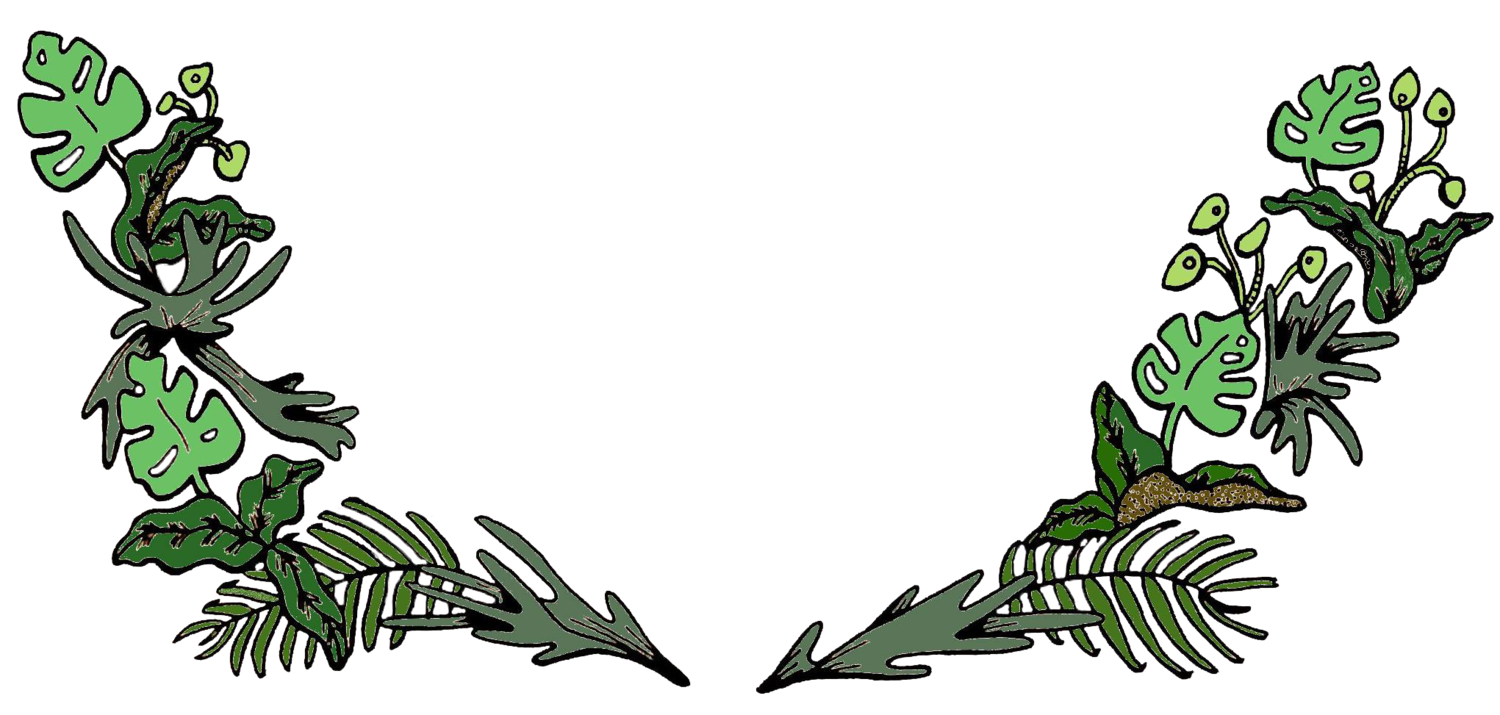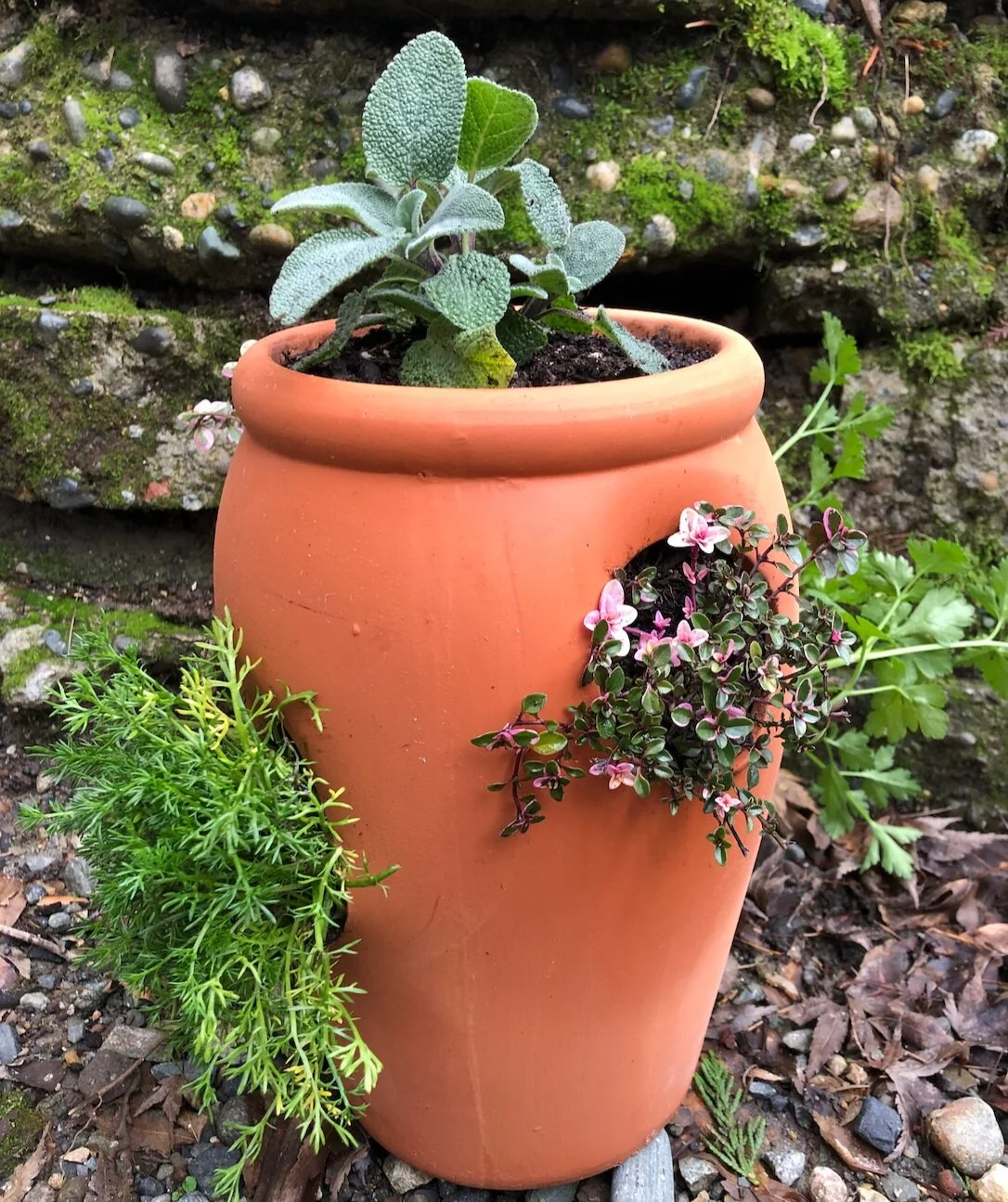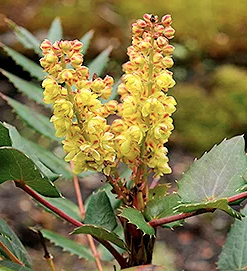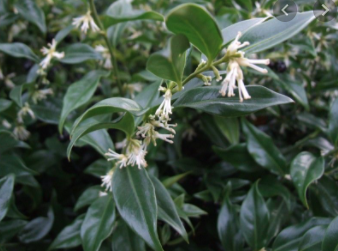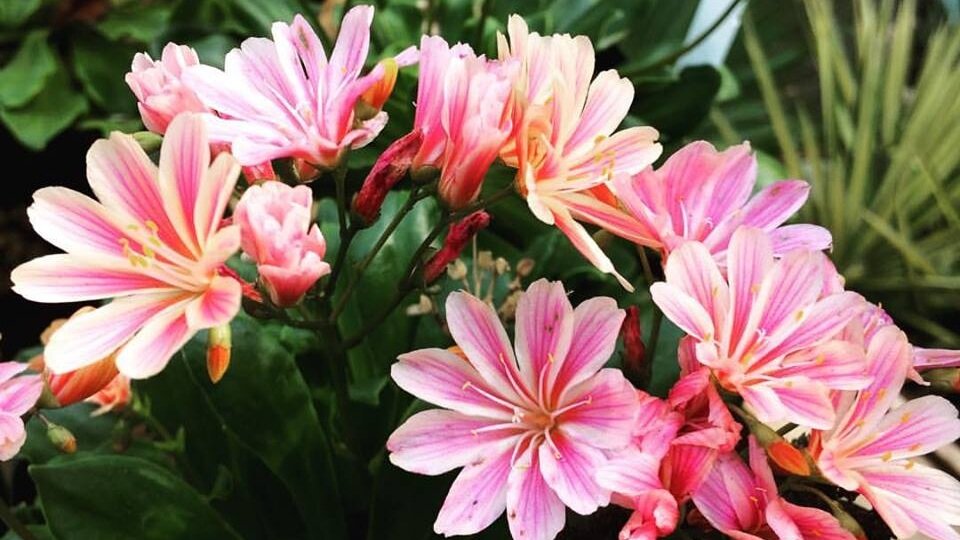
A Plant Powered Approach to Controlling Aphids
Of all of the insects that commonly visit your garden, aphids seem to be the most unwelcome guest. We’ve received numerous phone calls this season from customers looking for lady bugs to release in their garden. Unfortunately, the lady beetle population was dramatically impacted by last years fires, so we haven’t be able to bring them into the nursery. The good news, there are other holistic approaches to try, before reaching for a chemical control. Simply try controlling your aphid population with plants!
Plants that Naturally Repel Aphids
Aphids aren’t big fans of aromatic herbs. Planting garlic, chives, leeks, catnip, fennel, dill and cilantro will help repel aphids. Marigolds are also known to drive away a number of unwanted pests. Research good companion plants for these garden additions and place them wisely.
Plants that Attract Aphids
While some plants naturally repel, others are known to attract aphids. These trap plants will allow the population to be concentrated in one location, making it easy to spray or remove the little guys from your garden. These plants include Nasturtiums, Nicotiana and Sunflowers. Just make sure not to plant them too close to your key plants, as aphids might travel.
Let us know how this plant powered approach to aphid control works for you! Share your comments below or on Instagram.
Tomato Tidbits
Vigorous indeterminate plants produce slightly flattened, 13–14 ounce tomatoes with a purple cast and a good, rich flavor. Shoulders will remain green when ripe. One of the best-producing heirloom tomatoes. Great slicing tomato for sandwiches or served with cheese for a yummy snack!
Named for its shape, not flavor, the Pineapple tomato is a bi-color beefsteak tomato. The flavor improves towards end of season, with mildly sweet with low acidity, somewhat fruity, and includes a hint of citrus. Indeterminate.
A rare family heirloom from Poland, brought to Amsterdam, NY in the 1900s by the Opalka family. Indeterminate, regular leaf plant with wispy foliage produce some of the best tasting, red, paste tomatoes with 5-inch long fruit with a pronounced tip on the bottom. Fruit has very few seeds, is extremely meaty and loaded with rich sweet flavors lending to its sauce appeal.
Its name is simply Italian for oxheart. These big tomatoes have a bottom-heavy shape reminiscent of a pouch with a gathered top. They measure 3 ½ inches wide and 4 inches long and weigh in just under ½ pound each. Cuore di Bue is one of the tastiest saucing types with dense flesh and lustrous, orangey-red skin. Indeterminate.
The ultimate tomato for tomato paste and sauces. The compact, determinate Roma produces a large harvest of thick-walled, meaty, bright red, egg-shaped tomatoes about 3 inches long and with few seeds. While they can be eaten raw, they are at their best when cooked. A great addition to an omelet!
Photo courtesy of Skagit Horticulture
Beautiful, lemon yellow-skinned tomatoes with wonderful flavor. Lemon Boys are good for slicing, sandwiches, salads, cooking with pasta, and as a bisque. They make an especially striking salsa when combined with red tomatoes. Indeterminate.
Developed by Dr. James Baggett with Oregon State University, Oregon Spring are renowned for their early yields and ability to set easily in cool weather. The early tomato of choice for growers in cold, wet climates or anywhere with a short growing season. Fruits have a mild, sweet flavor and remain nearly seedless until the end of summer. Determinate.
If you want large, delicious, bright red, high yielding fruits all season, plant a ‘Better Boy’. This tomato is highly adaptable and has very good disease resistance. It also has good foliage protection to prevent sun scald.
Indeterminate Sungold vines are vigorous, early to bear, rich-tasting, juicy cherries are borne on long trusses for seasons long harvests of exceptional quality, superb orange color and the sweetest tomato flavor. This will be your favorite summer snack!
Photo courtesy of Skagit Horticulture
This heirloom cherry tomato features a rich mahogany-purple color and sweetly complex flavor. The round, 1-inch fruits grow in abundant heavy clusters on vigorous, fast growing indeterminate plants. Renee’s Garden Tip: For a delicious side dish, briefly sauté in a garlicky olive oil, then sprinkle with chopped fresh chives and basil.
From tomato breeder, Brad Gates of Wild Boar Farms. These rare, crack resistant, elongated multi-colored large cherries grow in clusters. When immature, the fruit is lavender and purple striped, turning to green, redish-brown with blue stripes when fully ripe! Inside you’ll find green flesh with a blushed red when extra ripe. The fruit range from large grape to plum sized, and are delicately sweet.
Determinate tomato plants ripen a heavy crop over a few weeks. Indeterminate varieties bear fruit continuously until frost.
Pick tomatoes when they are as ripe as possible. They should be fully colored and firm and picked regularly to avoid overloading plants.
At the end of the season, when you know there will be a frost, pick all the almost-ripe tomatoes you can, and ripen them in brown bags or spread on newspapers at room temperature. Many cultivars will store for months. Store only sound fruit, at 50-60°F. Do NOT refrigerate and try to avoid having the fruit touch each other.
The foliage of tomatoes is toxic and should not be eaten.
Sources:
- Territorial Seed Company, Renee’s Garden Seeds, Burpee Seed Co., Skagit Horticulture
Reccomended Reading: https://www.almanac.com/plant/tomatoes
Planting up a Strawberry Pot
Strawberry Pots are a great choice for space saving planting! Perfect for herbs, succulents, annuals, edible flowers and strawberries; these pots are super easy to plant and look fantastic on your patio. We made a quick video tutorial of how to plant up a Strawberry Pot!
Items Used:
- Strawberry Pot
- Potting Mix
- Herbs
Hummingbirds Winter Feast
Here in Seattle, we are lucky to have hummingbirds year round! But, If you only plant spring/summer bloomers in your yard, our tiny feathered have to change course to find a new source of nectar. To help out our backyard guests, consider planting the following winter blooming plants with nectar rich flowers:
Their bright yellow flowers stand out among evergreen foliage and snow to attract hummingbirds and other pollinators. Soft Caress will add a wonderful texture to your container or shade garden.
Similar candelabra-shaped yellow flowers as the Soft Caress, but with a broader leaf. Oregon Grape is a native plant that will help feed our fast flying friends.
The bright-red flowers, centered with golden stamens are eye-candy to you and taste like candy to the little hummers.
This shrub is great for dry shade. In January, it blooms a gazillion fragrant, nectar-laden flowers that are the perfect size and shape for a hummingbirds beak. It’s a real hummingbird feast!
As the blooms open in late winter, hummingbirds swarm their fragrant flowers. Even though hummingbirds lack a sense of smell, they know when these beauties begin to bloom.
Clicking on the image or plant name leads you to our online shop.
These are just a few favorites, but there are a lot more lovely options. Be sure to check the tags at the nursery for the pollinator icon when purchasing plants with them in mind. Add your favorite winter blooming pollinator friendly plants in the comments!
Breaking Down Fall Composting
Fall is a great time for composting. Not only for building your own bin with colorful fallen leaves, but also for top dressing your garden! Spreading compost over a garden bed, then covering it with mulch will encourage growth of soil organisms that will be super beneficial come springtime!
Break-down of Benefits:
• Encourages the growth of earthworms and other macro-organisms, whose tunneling makes room for water and air, making way for optimum root growth
• Provides nitrogen, phosphorus, potassium, sulfur and micro-organisms that are essential for plant growth • Acts as a glue, holding water and soil particles together, and makes soil resistant to erosion
• Binds itself to polluting metals, pesticides and other contaminants to prevent them from washing into waterways or being absorbed by plants
• Suppresses soil-borne diseases and plant pathogens (a number of plant and lawn diseases are suppressed by micro-organisms found in compost!)
Practice a technique called "side dressing". Apply a layer of compost a few inches away from the plants, protecting delicate plant stems from active microorganisms. This way, the compost is applied as a mulch and it reaps multiple rewards!
Seacoast Compost
Made in Oregon, certified organic and biodynamic. They make use of “waste” from three major Oregon Coast Industries. Fish, shrimp and crab from seafood processing, along with cow manure and bedding from organic dairies, as well as Red Alder hardwood from the lumber industry. They add in some homeopathic preparations like yarrow, chamomile, nettle, oak bark, dandelion and valerian to enliven the whole mix and stimulate plants to reach their full potential in their environments.
Malibu Compost
Made in California, certified organic and biodynamic. Their farm-made compost combines organic dairy cow manure, straw, wood chips, and biodynamic concentrations of yarrow, chamomile, valerian, stinging nettle, dandelion and oak bark. They proudly do not use products with synthetics, greenwaste, pesticides, hericides, growth hormones, and sewage sludge.
Sources:
King County Composting
SeaCoast Compost
Malibu Compost
A Trove of Cloves!
In addition to garlic being mighty yummy and great for our immune system, it is also a wonderful pest (and vampire) deterrent. Adding garlic around your garden and in different beds will be super handy when it comes to the amount of pests you have to manage come Spring and Summer.
Planting Instructions:
Break bulbs into individual cloves right before planting. Leave the papery skin on.
Plant 6-8" apart and 3-4" deep in well drained soil.
Water gently to settle the soil
Mulch the bed well with 3-6 inches of weed-free straw, hay or cut grass (this will also assist in easier harvesting in the Summer and deterring critters such as squirrels). Even as air temperatures drop, the soil will stay warm enough for the newly planted cloves to establish roots before the ground freezes.
Tips from Great Northern Garlic
Sometimes you'll see some green shoots form in fall; that's fine and won't harm plants. They'll begin growing in earnest in spring. If your soil needs a boost, add organic compost or all purpose fertilizer before planting.
You can soak the garlic cloves in a fish emulsion or liquid kelp fertilizer overnight before planting to improve health of the cloves. Fertilize again in the Spring. Harvest in early summer, generally around the 4th of July, or depending on when half of the leaves have died.
Harvesting
Each leaf above ground indicates a layer of protective paper wrapped around the bulb. A reliable harvest indicator is when half the leaves have died off, and half are still green. The leaves start to die off from the bottom up.
Stop watering 2 weeks prior to harvest and do not wash your garlic or remove the bulb wrappers after harvesting.
Storing
To store garlic, the process is calling curing. Leave the stalks and roots on the bulbs and either bundle 8 to 10 garlic stems together, tie with twine, and hang bulb-side down in a cool, dark space, like a basement, or lay the garlic flat on a raised screen in a single layer. Allow the bulbs to cure for three to four weeks.
Varieties Available at Urban Earth:
Striped violet wrappers house purple tinged cloves that explode with a fiery flavor that mellows out nicely to a rich garlic aftertaste. Stores well. Approx. 7-10 cloves per bulb and approximately 7-8 bulbs = 1 pound. Planting 1 pound will yield about 4-7 pounds.
Russian Red garlic has big bulbs that have a slightly purple skin that wraps the bulbs and cloves. This variety is a great garlic to grow for soil conditions that are slightly damp. Russian Red is one of the most flavorful heirloom garlic varieties. Approximately 6-9 cloves per bulb and approx. 7-8 bulbs = 1 pound. Planting 1 pound will yield about 4-7 pounds.
Great for culinary use and is an early season garlic harvest! This variety is one of the most commonly grown varieties in the U.S., and for good reason. It is a medium, easy to grow softneck, with a nice mild flavor and excellent storage ability. Approximately 8-12 cloves per bulb.and approx. 6-7 bulbs = 1 pound. Planting 1 pound will yield about 6-10 pounds.
Large cloves streaked with hues of rose, this beautiful Silverskin variety has a robust flavor. Great for cooking and long storing, up to 12 months! Excellent for braiding. Approximately 10-20 cloves per bulb and approx. 5-6 bulbs = 1 pound. Planting 1 pound will yield about 6-10 pounds.
All of our garlic is Certified Organic and Grown in Oroville, WA.
Water Wisely
July flew by in a beautiful buzz, and August is coming in hot (quite literally). With warmer temperatures and longer sun exposure, your plants are thirsty! Now is the time to introduce water wise techniques in your urban slice of earth.
Water is a precious resource and absolutely vital for keeping your vegetable garden happy. Wise watering techniques conserve water, save money, produce bigger yields and promote healthy plant growth. Here are five general guidelines to keep your garden thriving during these warmer months:
Healthy Soil: Establish retentive soil that slowly releases water to the plants. A top layer of mulch will also reduce the amount of water and weeding needed.
Timing: Water before 10AM. This will lead to less evaporation and more water absorbed by the plants. Leafy greens love an evening watering to cool down their soil and prevent plants from bolting.
Water Slowly: Water slowly, deeply, and less frequently. This allows plants to develop large root systems. Focus your watering into the soil, not onto the plant.
Be Consistent: Group plants by their watering needs. This is a great way to make watering easier from the get-go. Each vegetable or annual flower plant should receive about 1-2 gallons of water per week, spreading it out so you water the same amount every couple of days.
Equipment: A leaky hose is the quickest way to waste water. Be sure your hoses and faucet are in good working order. Simple dial timers and drip irrigation are great for very direct and accurate watering. Rain barrels are also a great way to water the natural way.
Next, we’ll talk about Xeriscaping! This is the use of drought tolerant, often native plants in your landscape. (Don’t picture a desert, we promise there are colors and flowers involved!)
Links:
The Seattle Conservation Corps Rain Barrels and Supplies for Sale
Tilth Garden Alliance
Photo by Randy Fath on Unsplash
